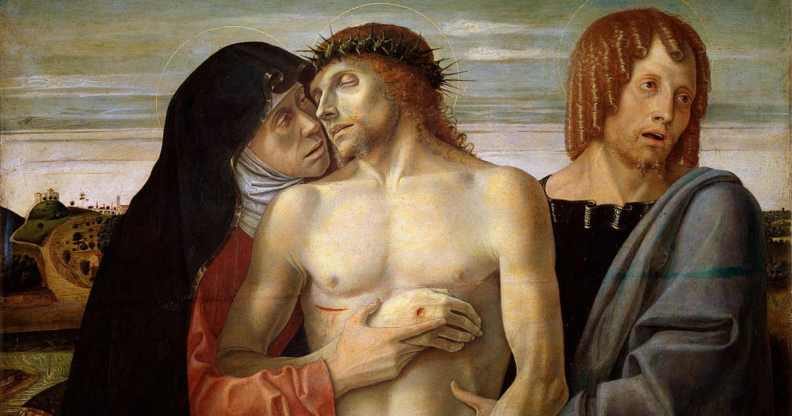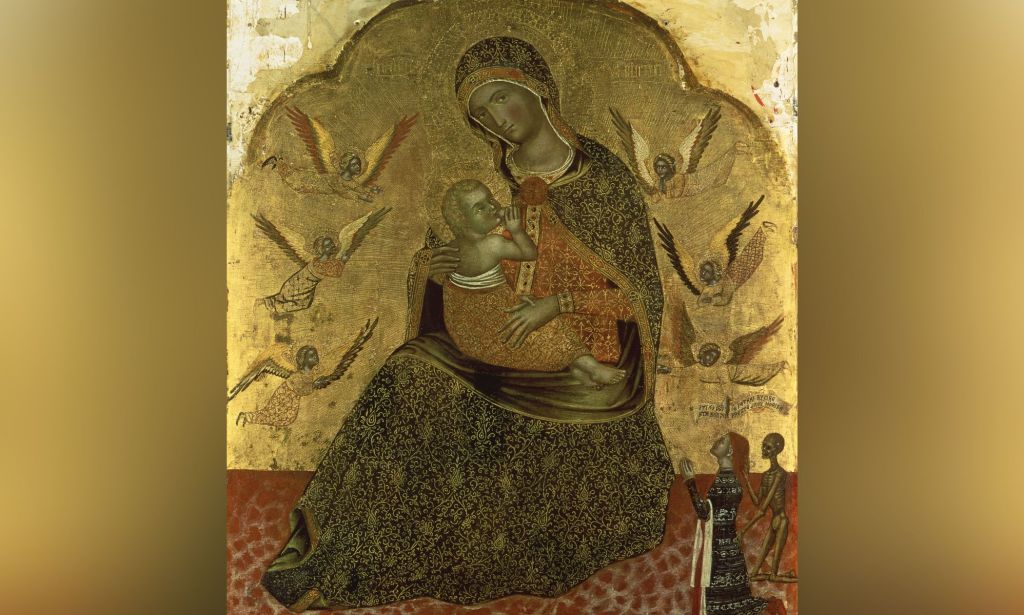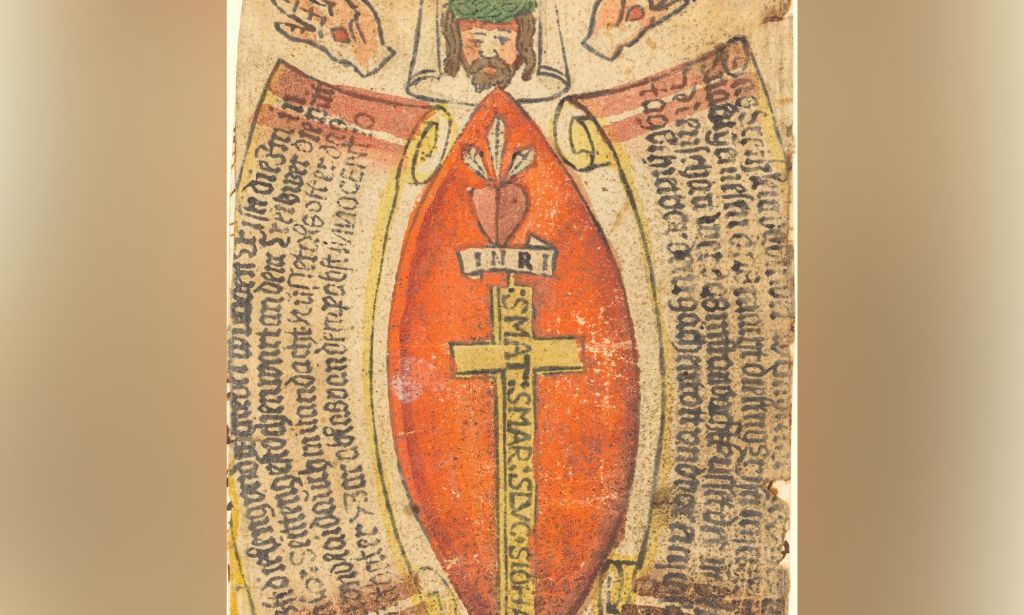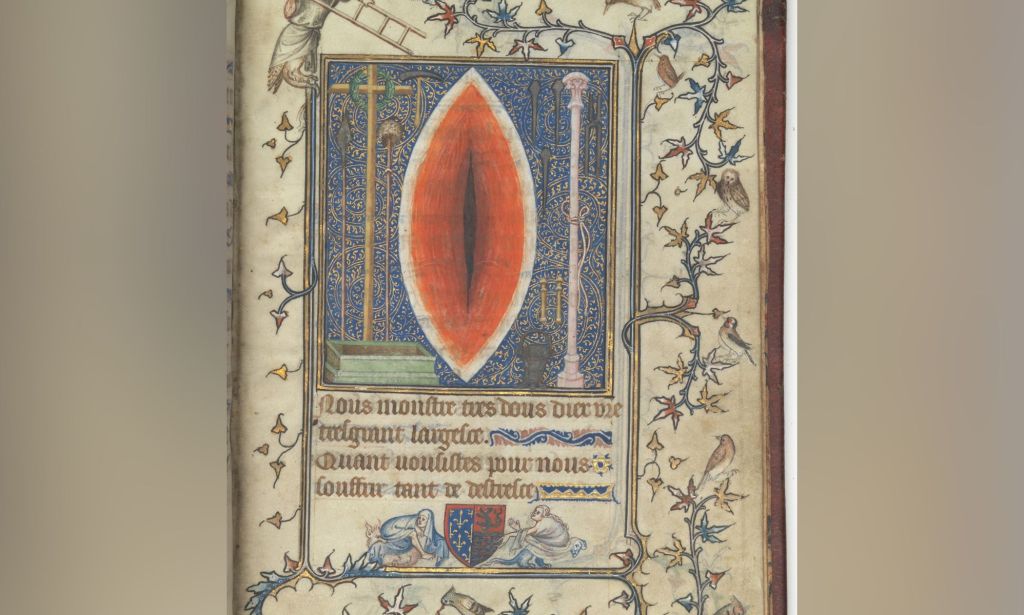There’s a long history of Jesus challenging gender norms: ‘I think of it as his coming out moment’

Pietà, or The Dead Christ Supported by the Virgin Mary and St John the Evangelist by Giovanni Bellini. (Leemage/Corbis via Getty)
In November 2022, right-wing media was abuzz that a University of Cambridge sermon claimed ‘Jesus was trans’.
The outcry kicked off after a fellow junior researcher from Trinity College analysed and discussed various artistic interpretations of Jesus.
During the analysis, the researcher asked the audience to consider the yonic depiction of the spear wound on Jesus’s side – which, according to the New Testament, was where his body was pierced at the crucifixion – and to ponder on the opportunities this has for thinking about Jesus’ identity.
Predictably, there was a media and online pile-on in response to the sermons, with headlines claiming the researcher suggested Jesus was trans.
The Telegraph and the Daily Mail claimed worshippers were left “in tears” about the “row over Christ’s wound having a ‘vaginal appearance’” – both outlets that haven’t shied away from publishing articles attacking the trans community.
Trinity College dean Doctor Michael Banner defended the fellow’s sermon as “legitimate” speculation on the interpretation of artistic portrayals of Jesus Christ’s body, and experts say the outrage ignored the history and theology of Jesus challenging societal norms.

Reverend Dr Simon Woodman from Bloomsbury Central Baptist Church tells PinkNews the history of artistic depictions of Jesus is part of a wider academic tradition called reception theory, “looking at the way the Bible functions in societies” and challenges them.
“I think what you’ve got there [in the ‘trans Jesus sermon’] are depictions of Jesus which, at the time, probably weren’t as scandalous as they might appear to us now because we’re hearing them in a very different context,” Woodman says.
He recalls being in Siena, Italy earlier this year where there were “lots of pictures of Jesus being breastfed by Mary” with some showing the “milk squirting out of the breast and ending up in the mouth of Jesus”.
“This was clearly a huge thing in mediaeval art, the symbolism behind it is there is the believer watching that image being invited to see themselves as sitting with Jesus receiving the blessings of grace from Mary,” he says.
“From a contemporary point of view, where we’ve got a whole load of hang ups about breastfeeding in public and issues around public nudity, those can feel really weird to look at – but they wouldn’t have been weird at the point at which they were painted.”

Poet Jay Hulme notes in an expansive Twitter thread theologians “often described Jesus as a ‘mother’”, including Julian of Norwich who wrote in the 1300s that Jesus is “our true Mother”.
Hulme explains Julian of Norwich also stated the “mother Jesus can feed us with himself” with the “blessed sacrament” like a “mother can give her child to such of her milk”. He said there’s a tradition that Jesus “gives life” similar to motherhood and childbirth – referencing when he raised “Lazarus from the tomb” and when he resurrected himself.
“They both involve the miraculous drawing out of human life from a dark cave, along a tunnel, and into the light,” Hulme wrote. “Sounds a lot like childbirth.”
He also says mediaeval Christians were “obsessed” with Jesus’ side wound, and “one of the main things they saw it as was some kind of portal”.

Woodman adds that Jesus embodies “minority-ness” in scripture.
“We know he would have been a dark-skinned person of Jewish extraction from that period, and the Bible then says he bears in his body the marks of the crucifixion,” Woodman says. “We don’t depict the resurrected Christ healed of his wounds, and Christian art picks up on this idea which I think speaks to issues around ability and disability.”
He continues: “We also know Jesus in his historical life was homeless, spent time as a refugee on the run. The Bible specifically says that, as an adult, the son of man has nowhere to lay his head.
“You’ve got Jesus experiencing economic impoverishment, which echoes through some of the artistic depictions of the flight to Egypt with Mary, Joseph and baby Jesus running to escape the murderous tyrant Herod.
“You’ve got Jesus embodying the non-mainstream and the non-powerful, defying gender norms. Jesus was unmarried and child-free, which is hugely redefining the gender norms of what masculinity would have been in his day.”

Father Shannon TL Kearns– a trans man who helps run Queer Theology, a platform exploring the ways Christianity has always been queer – says it’s important when “talking about Jesus as a human person” to acknowledge he lived in a “particular place and a particular time” under a patriarchal system when looking at such depictions through a queer lens.
“So when we’re talking about who’s going to get the most respect, who’s going to be listened to at all, especially in ancient times, it makes sense that the embodiment of God, the language that people use to back God, was masculine,” Kearn tells PinkNews.
He noted however that the language used about God wasn’t always masculine, and that the Holy Trinity was sometimes described using feminine language.
When it comes to the “embodiment of Jesus”, Kearn says there’s a “pretty consistent breaking” of gender roles, gender expectations and societal expectations “which is why Jesus’ work in ministry and life was so radical”.

Many queer and trans people have felt it “impossible” to be able to “look at scripture and see [themself] represented” because often the “text has been used as a weapon” against the LGBTQ+ community, Kearn explains
“So a lot of my work is simply giving people permission, to be like you can and should bring your whole self to the text.
“Often what is surprising is that it’s not just in moments where it’s clear there’s something kind of queer going on – where Jesus is hanging out with sex workers and sinners, where Jesus is spending more time with women, where Jesus is touching women,” Kearn says.
“Where he’s washing people’s feet, it’s clear something is happening there – that is a breaking of a binary, which is really powerful and important.
“I often think about Jesus’ transfiguration where he goes up on a mountain, gets all glowy, as his coming out moment. This is a moment where he pulled his closest friends aside and revealed something about himself that he hadn’t revealed before.
“When we read that as queer and trans folks, we know intimately the terror, excitement and hopefulness of that experience.”
How did this story make you feel?

